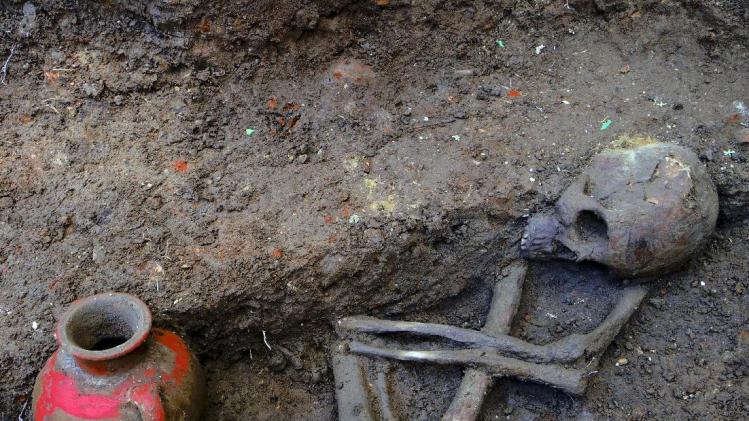by Doug Peacock
“I come more and more to the conclusion that wilderness, in America or anywhere else, is the only thing left worth saving.” —Edward Abbey
On the eve of
the 50th anniversary of the Wilderness Act, wilderness in America, as
physical sanctuary and as an idea, finds itself under an unprecedented
swarm of threats.
The first of
these threats is the usual business of extracting resources, pushed
urgently to the forefront by discoveries in the energy field: coal-bed
methane, fracking technology, and the tar sands of Alberta. Everyday,
here in Montana, you can watch the protracted lines of coal cars headed
night and day to Pacific ports where the dirtiest of fuel is shipped to
feed an endless Asian appetite for energy. Settling over wilderness
areas everywhere, like a deadly fog, is the scourge of our time: global
warming.
Two bills recently
passed by the U. S. House of Representatives aim at decimating
wilderness protection: The first (H. R. 3942) would open wilderness
areas in Yellowstone National Park to high-tech boating, while the
second bill (H.R. 4089) passed in April, would gut the entire 1964
Wilderness Act, opening wilderness areas to development and managing the
wildlife of these wild places as game farms. The sponsors of both these
bills are well-known conservative enemies of wilderness and the wild
animals who range freely in these habitats. Both bills aim at driving a
political wedge between environmental communities and their past allies
in the outdoor recreational industries.
Rob Bishop (r-Utah) and his cohort Cynthia Lummis (r-Wyoming) introduced the
River Paddling Act,
which would open sensitive areas of wilderness in Yellowstone and Grand
Teton National Parks to recreational paddling. Lummis and Bishop are
counted among the legislators most hostile to wilderness and
environmental protection on Capitol Hill, and why the paddling industry
has chosen such unsavory bedfellows as their champions puzzles many. The
only reason we have pockets of true wilderness left in a place like
Yellowstone is because we once made a collective decision not to go
there with our hoards of hikers, inner tubes, paddleboats, and other
recreational toys—in a word, restraint.
The
Safari Club and the National Rifle Association have funded and backed
H.R. 4089 all the way; the bill now sits in the Senate, slightly
modified. But these two anti-wilderness, anti-wildlife (with rare Safari
Club exceptions designed to keep a few trophy endangered animals around
to mount on their walls) groups are not going anywhere soon. As a
hunter with many guns, I despise these bullies and their deceitful shams
of wildlife protection.
Curiously, Outside magazine
has recently become the self-appointed cheerleader for trashing wild
areas of national parks, complaining loudly on National Public Radio and
OutsideOnline.com that “the people who are most desperate to be allowed
in [to the National Parks]: the paddlers, mountain bikers and other
adventure-sports athletes … are banned from many of the nation’s best
natural playgrounds.”
The
National Park Service (NPS) mandate of 1916 clearly stated that its
purpose is “to leave the land unimpaired for the enjoyment of future
generations,” but the Outside author stumbles over this founding
phrase and finds “unimpaired” and “enjoyment” to be “fuzzy concepts.” He
writes: “Imagine the possibilities. You could park near an entrance
point (to a national park), grab your bike, boat, climbing gear, or even
wingsuit (to jump off cliffs) and, you know, roller-skate in the
Sistine Chapel.” (Comparing Yellowstone to the Sistine Chapel is the
brainchild of an ex-superintendent of Yellowstone Park.) The Outside writer
accuses the NPS of suffering a “relevancy” problem, due to a “culture”
that cancelled the “iconic Badwater Ultramarathon” and bans adventure
sports where wildlife are granted priority. But “culture” is a straw
man; I don’t think the park has a culture anymore. The NPS also believes
in roads and tourist viewing; like most government institutions, it is a
can of worms. In any event, that park decision, made long ago, to not
allow paddling in a few, mostly remote, wild areas, was one of the best
ideas Yellowstone has ever had.
Another Outside argument:
“The result is that many wilderness-loving athletes find themselves
opposing new public-land designations because the added protections
would get them barred from areas they currently use.” I wonder where
they get this data? The proper vision of inclusivity, the Outside writer
implies, is getting “ten million urban kids into the parks by 2017.”
Those same kids would presumably be wearing and using the latest
high-tech clothing and gear purchased for billions of bucks from slick,
well-placed expensive ads in Outside. Geezers, it seems, are the
problem. Gen Y dudes buy the gear while the National Parks Conservation
Association, a historic defender of national parks, are old farts in
their 60s, shuffling around in cheap hiking boots.
In fact, a number of us old farts once wrote defending-the-wilderness articles for Outside, which was not always a warren for the outdoor gear, Me generation, recreational fat tire-heads. Ed Abbey wrote for Outside,
as did Terry Tempest Williams. I wrote at least a half-dozen articles
myself; each, as I remember, had a distinct conservation theme.
At
any rate, don’t worry too much about wilderness being under siege
because, according to some academic professors and semanticists, it may
not even exist. “Wilderness” is an antiquated concept, they say. The new
paradigm is that “wilderness” is a flawed notion and an imperialistic
enterprise of distinctly Western origins. These theorists are sometimes
called “wilderness deconstructionists” and, whatever the hell that
means, it doesn’t sound good. These guys claim Native Americans
significantly altered the character of the landscape by fire and
agriculture rendering the idea of untrammeled wilderness irrelevant.
Incidentally, geneticists think Homo sapiens first
made it to North America by way of Siberia 30,000 years ago, quite late
in the record of human migrations. And what did the First Americans
find? The largest wilderness that our species would ever encounter on
earth, a wilderness five times the area of Australia and never before
glimpsed by an upright primate. North and South America, though at that
time uninhabited by people, teemed with huge, unfamiliar, and fierce
beasts. Some of these extinct giant bears and lions probably actively
discouraged human settlement; it may have taken another 15,000 years for
the First Americans to get south of the ice. Some of those Pleistocene
animals are still with us.
Take the case of the American bison: The ice-age bison evolved into the Plains buffalo, Bison bison,
perhaps 10,000 years ago. When Lewis and Clarke pushed up the Missouri
River in 1804, some 60 million bison ranged the plains (an educated
guess, but, in any case, lots of buffalo). By 1902, there were 23 or 24
wild, free-ranging American bison left in the world; millions had been
slaughtered to the edge of extinction between 1865 and 1881. That, in a
pine nutshell, is illustrative of the differential weight of the
footprint between Native Americans and European immigrants. When we
white Americans got here, it was still all wilderness.
These
two-dozen bison hid out in Yellowstone National Park in a place called
Pelican Valley, a quiet place for wolves, grizzlies, and bison and
exactly where today’s recreational paddlers want to launch one of their
flotillas of pack rafts and inner tubes. I lived there for a half dozen
months of spring, spread over a decade, 35 years ago, camped hidden back
in the timber, just out of sight of the broad meadows through which
bubbled a sluggish creek fished by rafts of white pelicans, its banks
grazed by buffalo and grizzlies feeding on the fresh green grasses. It
was a quiet time, an indulgence as I see it now. I told myself I was
there to film grizzly bears, but that was merely my pretext for endless
solo days spent silently watching the snow-corniced ridges for wildlife
and listening to the wind. I saw no people and left few tracks,
travelling on snowshoes over morning-crusted snow. I hid out for weeks
in my wilderness, now just a small vulnerable island of wildness, but at
the time it felt huge. Wilderness was what I needed most in those days,
after returning from war in Southeast Asia.
I
don’t go back there very often—a conscious decision. I did once see a
pack of wolves try to bring down a bison at decade or so ago. But we
make wild places less wild with our visits. What would professional
running and competitive biking contribute to a place that has mountain
lions and grizzly bears? The number of humans getting mauled, for one
thing, would rise exponentially. The vast majority of grizzly-inflicted
human injuries and fatalities comes from people surprising a mother bear
with cubs on a day bed and then running. Biking and marathoning on park
trails are to predators the equivalent of running. The first rule in
grizzly country is never run.
“Wilderness
begins in the human mind,” wrote Edward Abbey. For me, wilderness is
also a good place to make camp, somewhere to hide out, less a fragile
Sistine Chapel than the woods where the grizzly poops, a sufficiently
wild enclave to see your own life as equal or subordinate to that of
other species, like moose, cranes, and frogs. I prefer my wilderness
areas to house a few man-eaters (technically, equal-opportunity
predators). David Brower put it slightly more eloquently when he said:
“Wilderness is where the hand of man has not set foot.”
Human
consciousness evolved within wild habitats from the African savannah
all the way to the frozen tundra of the North—those landscapes whose
remnants we now call “wilderness.” That big brain we so tout today was
shaped by the mammoths we hunted, by the great cats and bears that
sometimes stalked us. And, as the wolf still sculpts elk evolution, in
what landscape today reside the forces that yet hone the human mind born
of wildness?































